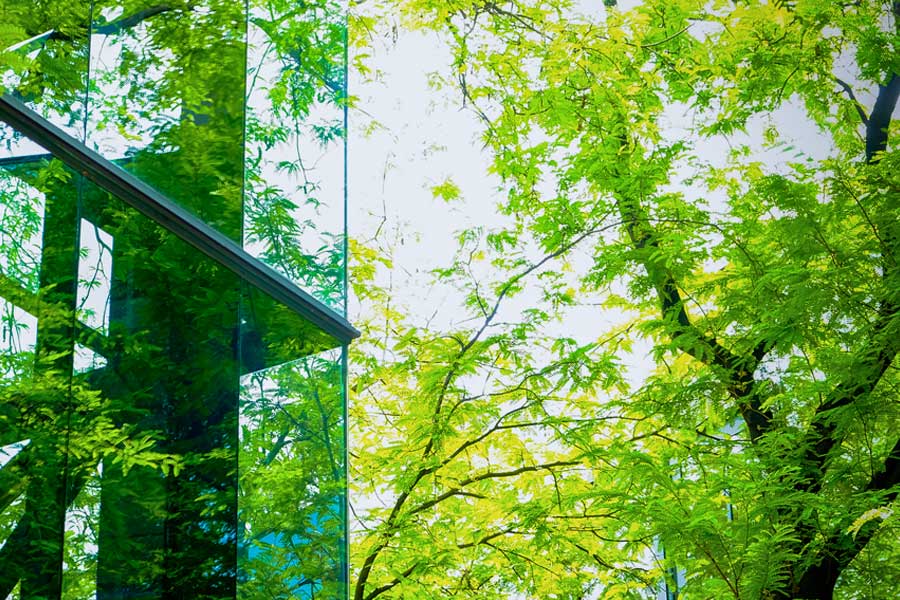Two of the world’s most pressing problems are climate change and population growth. Is sustainable urban design the only way out?
By 2050, there are expected to be close to 9 billion people on the planet, up 50% from today’s figure, and estimates suggest that in less than 30 years 70% of people will be living in urban areas.
With the pressures on the planet’s already-stretched resources inevitably set to increase, it is clear that such new or enlarged population centers will need to be sustainably designed, planned, constructed and operated.
The use of renewables, an ongoing reduction in waste and finding closed-loop solutions to make the goods we use every day will be essential elements in such a drive toward a more realistic and sustainable future.
What makes a sustainable urban environment?
Experts have laid out what is required of those looking to build and design sustainable urban communities, and while these vary to some degree, there are still common themes:
- Infrastructure: Modern transport networks, water supplies, sustainable and affordable housing
- Smart buildings: Construction activity will be focused on creating buildings that are highly adaptable for occupants via modern methods of construction, minimizing onsite waste and improving delivery times and worker safety
- Realistic recognition of the threat of climate change and implementing strategies, with appropriate funding to improve resilience to climate change and disaster risks
- Cooperation: The United Nations University argues that urban sustainable development needs to be a top priority not only in cities but beyond urban boundaries; countries also need to collaborate on sustainable policies that benefit all
- The integration of technical, industrial and natural systems, where the quality of the environment is preserved and maintained, and industrial processes ensure maximum efficiency in the use of both materials and energy resources
Investment opportunities for eco-friendly city design
Vital to increasing the sustainability message is illustrating that it makes sense financially — creating places where people can live in developing cities and other urban areas in a sustainable way makes investment sense.
A report published by the Business & Sustainable Development Commission suggested that the pursuit of sustainable and inclusive business models could unlock economic opportunities worth at least $12 trillion a year by 2030, with nearly $4 trillion of that from cities alone.
The potential for investment rewards is not lost on financial institutions, which recognize the pent-up demand for greener solutions when it comes to building and maintaining new urban schemes. The role of regulatory authorities who press for better environmental outcomes shouldn’t be overlooked, either.
Getting the construction industry on board with sustainable urban design
The construction industry, while at times slow to take up new working practices, is fast developing the means to deliver sustainable urban environments, urged on by the need to meet net-zero carbon targets.
Planners, place-makers and designers are responding to the climate crisis and creating neighborhoods that meet the needs of both those living and working in them as well as minimizing the impact they have on the environment.
Such firms include Arup, which says its integrated urbanism approach to master planning “acknowledges the interdependence of urban systems and communities as well as the effects of global issues, such as climate change resilience and economic uncertainty, on the future of our cities.”
This is making an impact. Smart buildings that respond to occupants’ needs and have sustainable features—light, ventilation and so on—are becoming more common.
The Southworks building in London, developed by real estate investment group MiddleCap, recently became the first in the U.K. to receive the platinum category for smart building certification, which assesses six areas: building usage; user behavior and collaboration; building performance; building environment; integrative design and connectivity; and health, safety and security.
Politics matters
Beyond individual buildings, the creation of sustainable communities is becoming more important for those charged with overseeing them, namely local authorities.
Lewisham Council in southeast London claims to have been among the first to declare a climate emergency.
The local authority recently published a timetable for its Local Plan, where it sets out its ambitions for the next two decades.
Sustainability ranks highly, with the council’s paper stressing what it calls “a significant step change in the design quality and environmental performance of buildings and spaces is needed” to achieve the Local Plan’s strategic objectives, particularly for climate change adaptation and mitigation.
“Sustainable design principles should therefore be considered early in the planning and design stages and be fully integrated throughout the development process, including the construction and occupation stages,” it adds.
Lewisham isn’t alone in setting out such an agenda. Local and central governments across the country recognize the need for getting the nation’s environmental house in order, understanding that building and living in a sustainable way is the only way forward.
The future is bright
And while there are plenty of knowledgeable people around today championing sustainable practices, universities are offering courses for the environmental standard-bearers of tomorrow.
Perhaps Austrian architect Chris Precht, the 36-year-old designer of Toronto’s Tree Tower, sums up what many feel.
Asked why he wanted to build sustainably, he told Euronews: “Our problems are too urgent to build any other way. Climate change and its consequences are the issues of our generation and the building industry plays a big role in its cause and its solution.”
“As architects, we should think more what a building has to offer to a neighbourhood. How it affects a community. Buildings that are more than just expensive real estate.”
It’s hard to disagree. Isn’t it?











